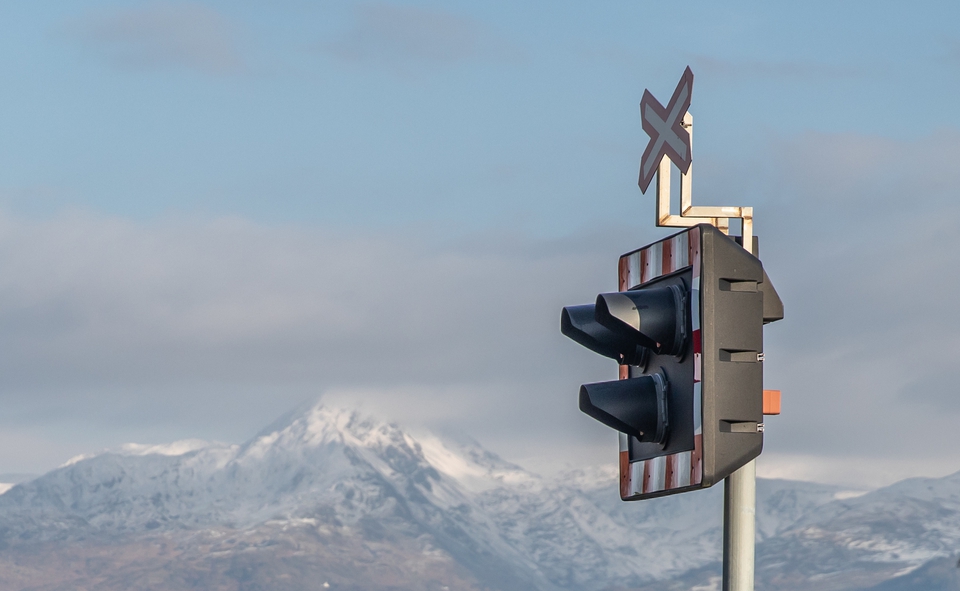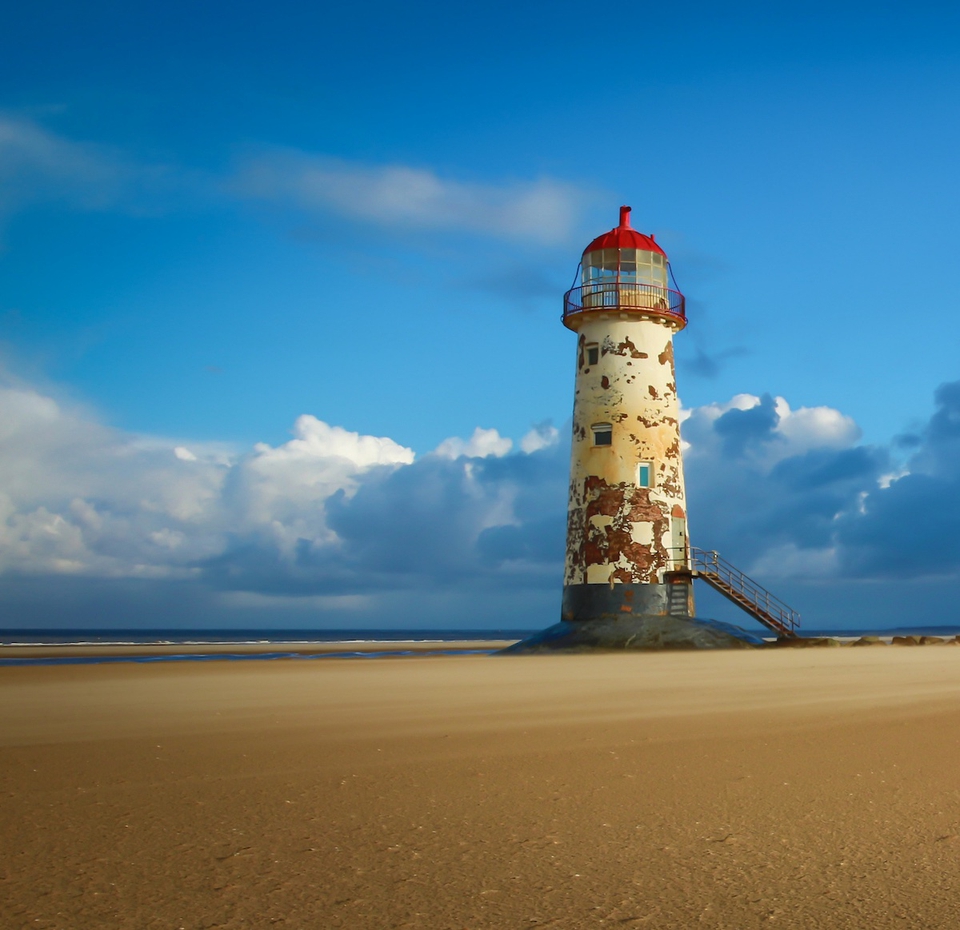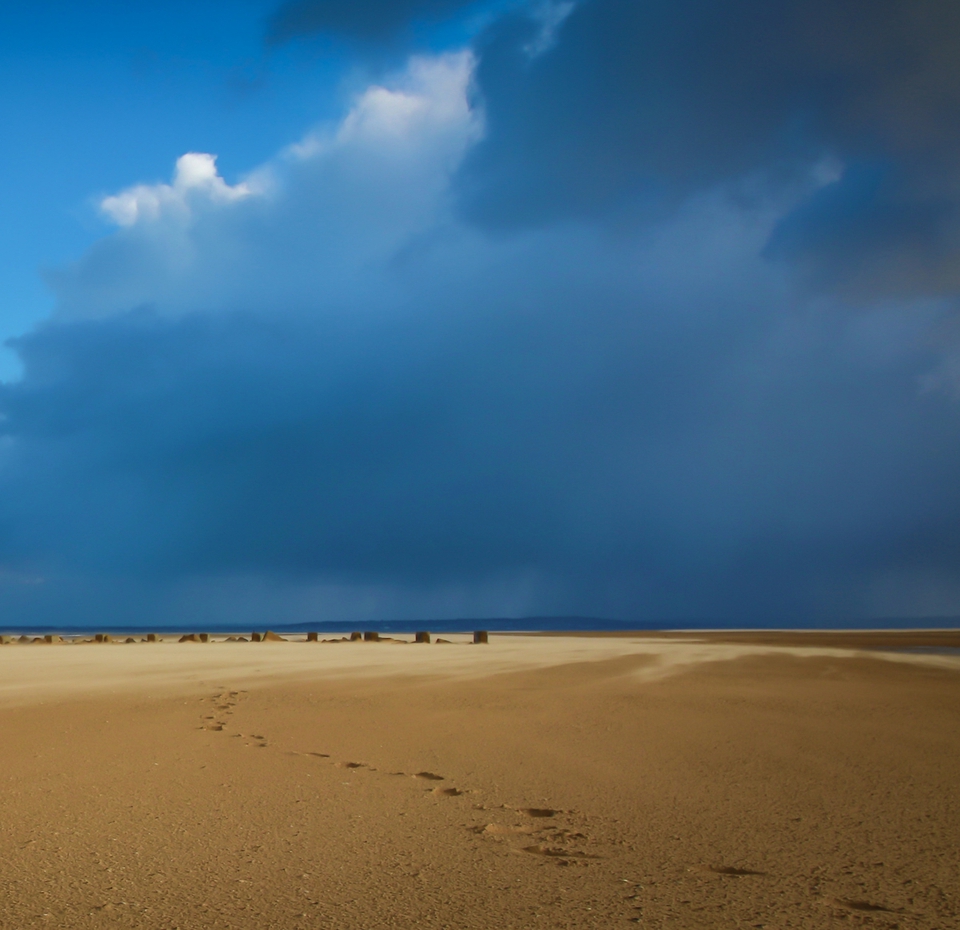
Myfi, Iesu
Trydedd Wythnos y Grawys
Myfi yw goleuni'r byd
‘Yna llefarodd Iesu wrthynt eto. “Myfi yw goleuni’r byd,” meddai. “Ni bydd neb sy’n fy nghanlyn i byth yn rhodio yn y tywyllwch, ond bydd ganddo oleuni’r bywyd.”’
Ioan 8:12
Yn ei gerdd ‘The Kingdom’, cyfeiria R S Thomas at y ‘drychau mae’r deillion yn edrych arnynt eu hunain ynddynt a chariad yn edrych yn ôl arnynt’. Yng ngeiriau Iesu, canfyddwn y tywyllwch a all fod yn bresennol mewn dallineb ond hefyd goleuni’n adlewyrchu o ddrych, yn cynrychioli cariad.
Wrth i Iesu gyhoeddi mai ef yw ‘goleuni’r byd’, mae’n amlygu presenoldeb Duw yn y byd, yn disgleirio yn y tywyllwch. Gorchmynwyd y goleuni hwnnw gyntaf ar ddechrau un Llyfr Genesis, Pennod 1 ac adnodau 3 i 5, pan ddywedodd Duw ‘Bydded goleuni’, a bu goleuni a gwelodd Duw fod y goleuni yn dda. Dyma hefyd y goleuni a ragwelwyd yn Eseia 9:2: ‘Y bobl oedd yn rhodio mewn tywyllwch a welodd oleuni mawr.’
Mae yna rywbeth ynghylch y tywyllwch a all fod yn gysylltiedig â cholli’r golwg a nodweddion adlewyrchol drychau sy’n ein hatgoffa o’r modd mae goleuni Crist, wrth ddod i’r byd, yn cyrraedd y mannau tywyllaf. Ac nid dim ond goleuni sy’n disgleirio ohono ond hefyd cynhesrwydd, cynhesrwydd cariad Crist tuag at greadigaeth Duw, ac at bob un ohonom ninnau.
Seiliwyd darlun trawiadol a dadlennol William Holman Hunt (sydd i’w weld yng Nghadeirlan Sant Paul ac yng Ngholeg Keble, Rhydychen) ar adnod yn Llyfr y Datguddiad (3:20) lle dywed Iesu, ‘Wele, yr wyf yn sefyll wrth y drws ac yn curo’. Mae’r darlun yn dangos Iesu fel goleuni’r byd ynddo’i hun (goleuni sy’n llewyrchu o’i gwmpas ac ohono) ac fel yr un sy’n dal y goleuni, llusern a all ein hatgoffa o’r golofn dân â’r hon y tywysodd yr Arglwydd blant Israel yn yr anialwch.
O edrych yn fanwl ar y darlun, gwelir nad oes handlen ar ochr Iesu i’r drws, gan olygu na ellir ond ei agor o’r tu mewn. Dywedodd Hunt ei hun mai cynrychioli rhwystr meddwl caeedig oedd hynny. Ond pa mor hir bynnag y bydd eich meddwl yn ceisio cau allan y goleuni, bydd Iesu’n parhau i guro’n ddyfal hyd nes y caiff ei ateb o’r diwedd.
Wrth i ni deithio drwy gyfnod y Grawys, a all ymddangos weithiau’n adeg dywyll, fe wnawn hynny gan wybod bod Goleuni’r Byd yno i’n harwain ac mai’r cwbl sydd raid i ni ei wneud yw dilyn y llusern honno. Pa mor dywyll bynnag yr ymddengys ein sefyllfa i ni, Crist yw ein goleuni, yn cyd-deithio â ni ac yn goleuo’r ffordd o’n blaenau.
Mae’n ddigon posibl mai’r flwyddyn a aeth heibio yw’r un dywyllaf y mae’r rhan fwyaf ohonom erioed wedi’i phrofi – misoedd cyfnodau clo ac ynysu, y disgwyl hir am ddyfeisio brechlyn ac am y brechu ei hun. Hyd yn oed yn nyfnderoedd anobaith, fodd bynnag, mae goleuni cariad Duw yn disgleirio drwy’r tywyllwch yn Iesu.
Mae ein brodyr a’n chwiorydd Uniongred yn arbenigo mewn darlunio a chyfleu goleuni o fewn eu heiconau. Maent yn cyfeirio ato fel goleuni dwyfol, goleuni nad yw’n bwrw unrhyw gysgodion, goleuni sy’n disgleirio o’r tu mewn allan, a goleuni hefyd sydd yn adlewyrchu cariad Duw at ei greadigaeth.
Yn ein gweinidogaeth ac ar ein taith fe’n gelwir i adlewyrchu goleuni Crist i mewn i’r mannau mwyaf tywyll. Gwnawn hynny drwy geisio a gwasanaethu’r rhai sydd mewn angen, drwy daflu goleuni ar Iesu yn ein bywydau beunyddiol ac wrth ofalu am greadigaeth Duw. Ac yn y pen draw, rydym yn coleddu gobaith am oleuni’r nefoedd, gan i ni ddarllen yn Datguddiad 21:23: ‘Nid oes ar y ddinas angen na’r haul na’r lleuad i dywynnu arni, oherwydd gogoniant Duw sy’n ei goleuo, a’i lamp hi yw’r Oen.’
Hugh Jones a Vince Morris
Hollalluog Dduw,
yn Iesu rwyt wedi datguddio dy bresenoldeb
yn lleol a thrwy’r holl fyd fel y bydd pawb sy’n dy ddilyn di
yn amlygu dy gyfiawnder a’th heddwch.
Agor fy nghalon i glywed Iesu’n dweud,
‘Myfi yw goleuni’r byd’;
yr hwn a fu, y sydd
ac a fydd hyd byth.
Amen.
Deuaf at Iesu, goleuni’r byd:
bydd gyda mi wrth i mi geisio dy oleuni
yn yr hyn sy’n gyfarwydd a’r hyn sydd yn ddieithr
wrth droedio’r llwybr hwn drwy’r Grawys eleni.
Amen.

Cwestiynau
- Mae yna bob mathau o ffyrdd o gynhyrchu goleuni, o danio matsien hyd oleuo awtomatig mewn goleudy. Pa un sy’n darlunio Iesu fel ‘goleuni’r byd’ yn y modd mwyaf eglur i chi?
- Sut ydych chi wedi bod yn ymwybodol bod Iesu’n ‘goleuo’r ffordd’ ar eich taith chithau drwy fywyd?
- Mae eiconau’n ffurf ar gelf grefyddol sy’n arbennig o bwysig yn yr Eglwys Uniongred. Pa weithiau celf – os oes yna rai – sy’n goleuo eich dealltwriaeth chithau o Iesu?
- Pa un gair sy’n crynhoi eich teimladau am Iesu fel ‘goleuni’r byd’?
I, Jesus
The Third Week of Lent
I am the light of the world
‘Again Jesus spoke to them, saying: “I am the light of the world. Whoever follows me will walk in darkness but will have the light of life.”’
John 8:12
In his poem ‘The Kingdom’, RS Thomas speaks of ‘mirrors in which the blind look at themselves and love looks back at them’. In Jesus’ words we find the darkness which can be present in blindness but also the reflective light of a mirror representing love.
As Jesus proclaims himself the ‘light of the world’, he is illuminating God’s presence in the world, shining in darkness. This light was proclaimed at the very beginning of Genesis, chapter 1: 3-5 where God said ‘Let there be light’ and there was light and God saw that the light was good. It is the light foretold in Isaiah 9:2: ‘The people who walked in darkness have seen a great light.’
There is something about the darkness that can be associated with loss of sight and the reflective aspect of mirrors which remind us of how the light of Christ, coming into the world, reaches into the darkest places. That light has the power to radiate not just light but warmth, and warmth that reflects the love of Christ for God’s creation, for each and every one of us.
The brilliant and illuminating painting by William Holman Hunt (hanging in St Paul’s Cathedral and also Keble College, Oxford) is based upon a verse in Revelation (3: 20, RSV) in which Jesus says, ‘Behold, I stand at the door and knock’. The painting shows Jesus both as the light of the world (it glows from with him and surrounds him) and as holding the light, a lantern that can remind us of the pillar of fire with which the Lord guided the Israelites in the wilderness.
A close examination of the painting reveals that there is no handle on Jesus’ side of the door, meaning that it can only be opened from the inside. Hunt himself reflected that this represented the obstruction of a closed mind. But no matter how long your mind is closed to the light, Jesus continues to knock unperturbed until at last he is answered.
As we move through the Lenten season, which can sometimes feel a dark time, we do so in the knowledge that the Light of the World is there to lead us and all we have to do is follow that lantern. However dark we may perceive our situation to be, Christ is our light, with us on our journey and illuminating the way ahead.
The past year may have been the darkest that most of us have ever experienced - the months of lockdown and isolation, the long wait for a vaccine and vaccination. Even in the depths of despair, however, the light that is the love of God shines through in Jesus.
Our Orthodox brothers and sisters are expert in encapsulating and incorporating light within iconography. They refer to it as a divine light, a light that casts no shadows, a light that shines from within and at the same time reflects God’s love for his creation.
In our ministry and on our journey we are called to reflect the light of Christ into the darkest places. We do so by seeking out and serving those in need, by shining a light on Jesus in our daily lives, by caring for God’s creation. And in the end, we have the hope of the light of heaven, as we read in Revelation 21:23: ‘The city has no need of sun or moon to shine on it, for the glory of God is its light, and its lamp is the Lamb.’
Hugh Jones and Vince Morris
Almighty God,
in Jesus you have revealed your presence
locally and globally so all who follow you
will bring into the light your justice and peace.
Open my heart to hear Jesus say,
‘I am the light of the world’;
who was and is
and evermore shall be.
Amen.
I come to Jesus, the light of the world:
be with me as I seek your light
in the known and unknown
of this Lenten journey.
Amen.

Questions
- There are countless ways of producing light, from striking a match to an automated lighthouse. Which one speaks most clearly to you of Jesus as ‘light of the world’?
- How have you experienced Jesus as ‘lighting the way’ in your own life journey?
- Icons are religious works of art with particular importance in the Orthodox Church. What – if any – works of art do you find ‘enlightening’ for your understanding of Jesus?
- What one word sums up your feelings about Jesus being ‘the light of the world’?
